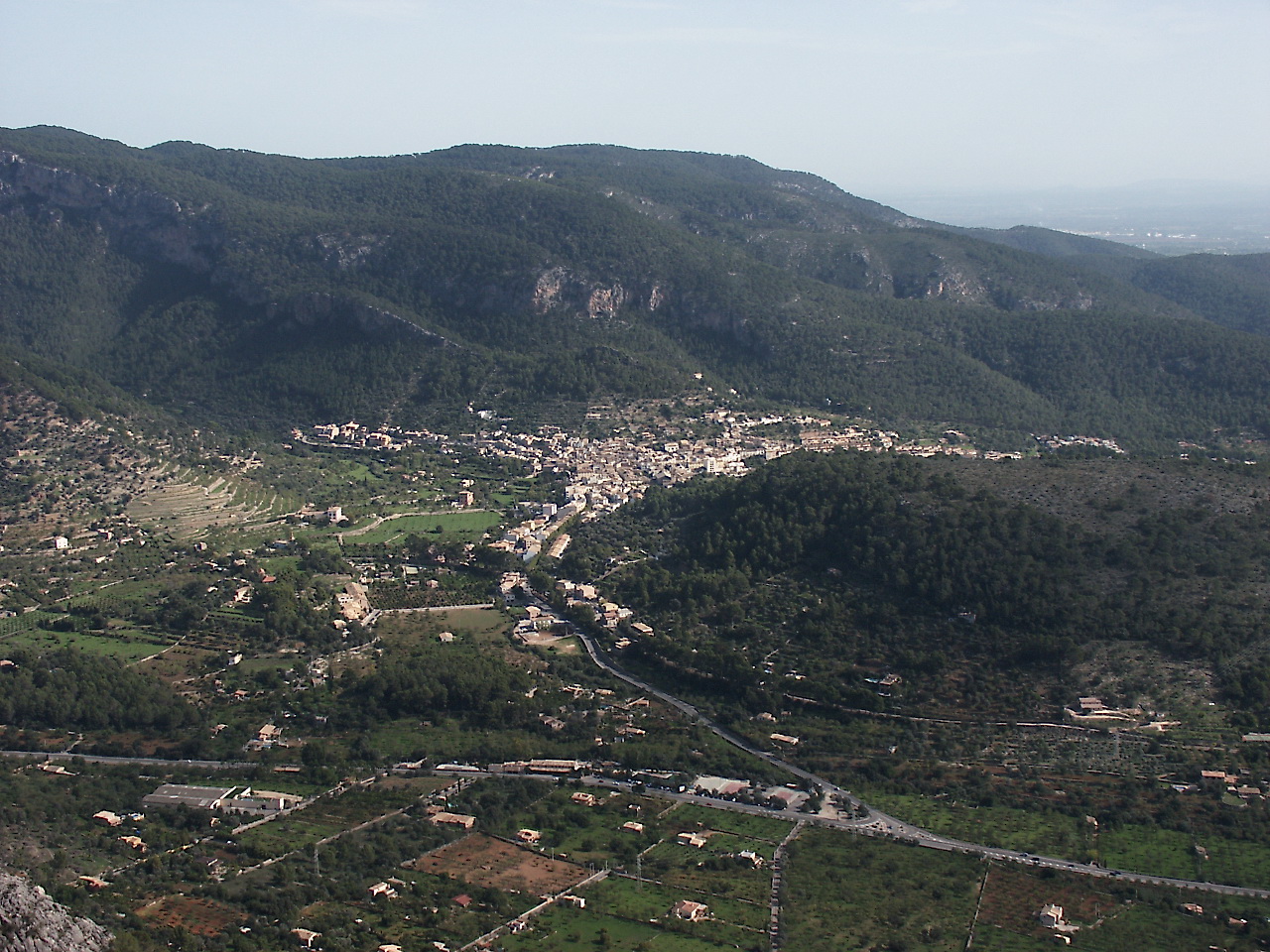Bunyola
Bunyola ( Castilian Buñola ) is a small town in the northwest of the Spanish Balearic island of Mallorca.
- 4.1 associations
- 4.2 Fixed
- 4.3 Market
- 5.1 Education
Statistics
The Bunyola has an area of 84.63 km ² and 6619 inhabitants (as of 1 January 2013). This corresponds to a population density of 78 people per km ². In 2006, the proportion of foreigners was 8.5 % ( 472), the proportion of German population 1.8% (103 persons). In 1991, 82.56 % of the population Mallorcan, 12.89 % came from other Spanish provinces, and only 3.55% were foreigners. In the 18th century lived 1521 people in the community. From this point on, the population grew slowly at first, but since the 1970s sharply. About ten mountains, where Sa Rateta with 1118 meters is the highest and the Puig de s'Estremera with 277 meters of the lowest, adjacent to the church.
Geography
Location
On the main road MA -11 from Palma to Sóller direction at kilometer 14 is right the vast Bunyola, which have a large amount of natural treasures and cultural heritage. The district can be divided into two mutually very different sectors: the northern and the southern mountainous part, which extends to the plains of Palma with its numerous olive groves. The northern part includes a part of the Serra de Tramuntana, a barrier of 1000 meters of altitude, which is broken only by the Coll de Sóller with 496 meters. The peaks of this mountain range seen no vegetation, while the slopes have a high stone oak trees, which mixes in some places with pine trees.
To reach the place is convenient for day trips by train from Palma.
Places in the municipality
To Bunyola include the following locations:
- Baix of Puig (14/ 14 inhabitants )
- Bunyola (2327/4045 inhabitants) Sa Coma ( 518 inhabitants)
- Sa Font Seca (87 inhabitants)
The population figures in brackets are from 1 January 2008. The first number indicates the inhabitants of the built-up areas where the second number the inhabitants of places including the addition to computing " scattered " population living outside the actual settlements. (Source: INE )
Climate
In Bunyola the year be registered via precipitation. The driest month is July with an average of 9.3 l / m². The highest rainfall recorded in December to 95.5 l / m². The highest rainfall was registered on 17 April 1942 where 270 l / m² fell.
History
The origin of the name Bunyola is not clear. Some researchers believe that the name comes from the Latin uineola, which means something like small winery, and that the Arabs transformed the name into buniola later. Another theory is that the name comes directly from the Arabic Bunyan.
The cultural-historical estate is remarkable in this county. At the foot of the mountain range there are a high number of well-known stately homes, such as S'Alqueria, Biniforani, Sa Font Seca, etc. and of course the two most famous buildings with gardens: Alfàbia and Raixa.
From lower cultural value but very interesting construction can be seen in Na Franquesa and Al Teix: constructions with which one can catch snow. In the Puig des Teix is also the former mansion Caça del Rei Sancho, that the King Jaume I. attributing the folk poetry.
Culture and sights
Jardins d' Alfàbia: Right Hand of the main road to Soller, about 3.5 kilometers north of Bunyola and just before the entrance to the tunnel, perhaps the most beautiful gardens in Mallorca waiting for a visit. They belong to the former estate of an apparently instinctive safe Moors: Abet called Ben, the predictive vizier had supported the Christian King James I in the recapture of Mallorca by his co-religionists and had been rewarded with the generous possession. Moorish horticulture transformed with clever -scale channels the water region into a veritable jungle of many trees, exotic plants and flowering shrubs. In the corresponding mansion that comes mainly from the 14th and 15th century antiques and antique furniture are seen. The ceiling in the gate construction made in the Moorish- Christian Mudéjar style, carries an inscription that praises Allah. At the entrance of the Strait of Sóller coming, is the small train station, from which a trip to Soller and Port de Sóller is recommended through the mountains.
Clubs
Cultural associations:
- Polyphonic Choir of Bunyola
- Dance school
- Theater group Bunyola
- Scout Association Nuredduna
Sports clubs:
- SDJ Bunyola football
- Volleyball Club Bunyola
- Cycling club " There pedal "
Festivals
- Mare de Deu de les Neus, usually on weekends (Sat / Sun ), which is the 5th of the next. Festival in honor of the former local saint, which was replaced by Sant Mateu in the 19th century.
- Sant Mateu: several days around the 21st of September. Legal popular festival, local dances, theater and music.
Market
Weekly Market: Saturdays, on the main square.
Economy and infrastructure
Education
Part of the population ( 18th century ) had no schooling (42 inhabitants), most residents had a primary school completion (1034 inhabitants) or the high school (843 people), and only a few had a university degree (146 people).
Sons and daughters of the town
- Antonio Colom (born 1978 ), Spanish cyclist










